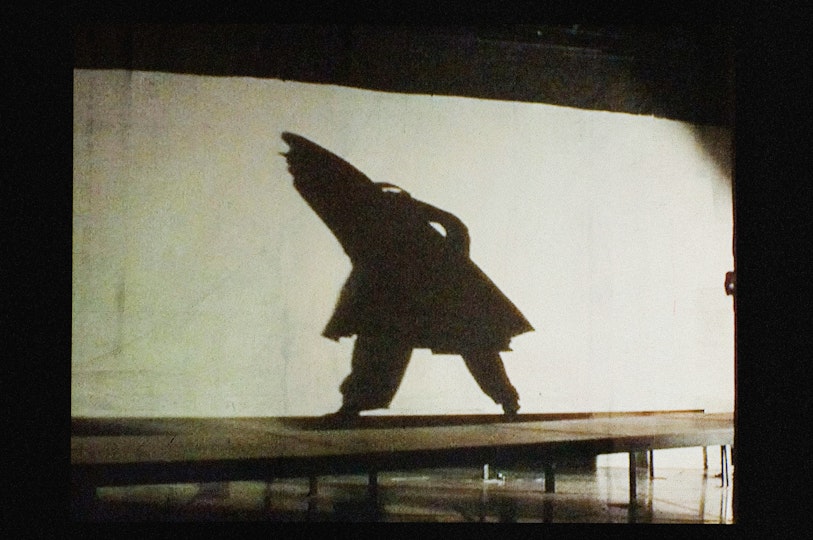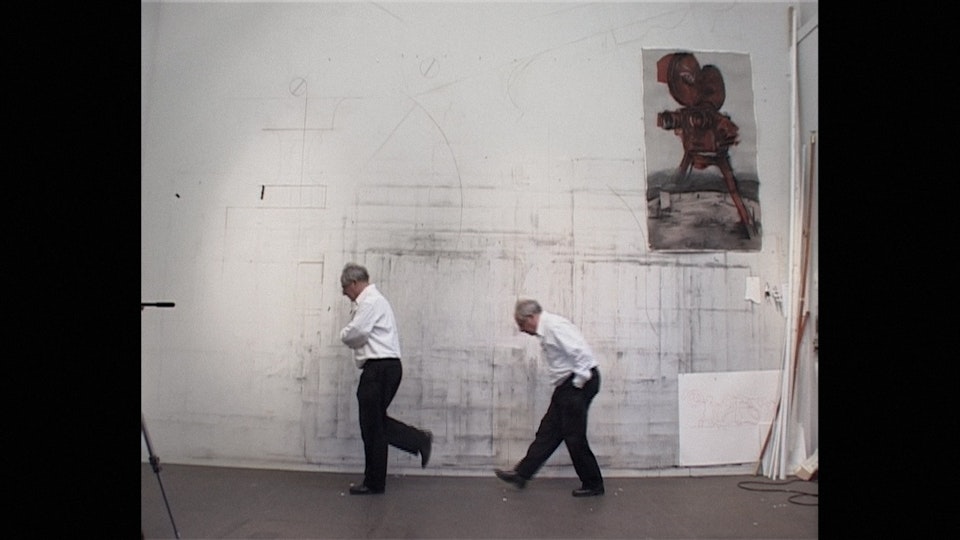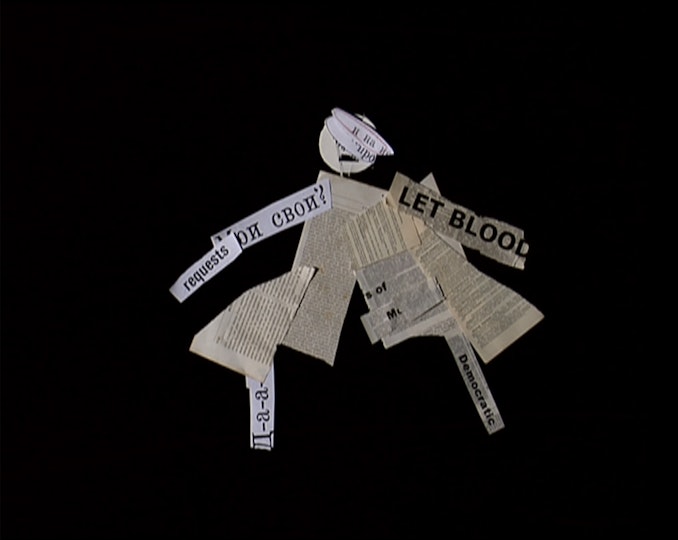William Kentridge
I am not me, the horse is not mine 2008

William Kentridge I am not me, the horse is not mine 2008 (detail, video still), Art Gallery of New South Wales © William Kentridge

William Kentridge I am not me, the horse is not mine 2008 (detail, video still), Art Gallery of New South Wales © William Kentridge

William Kentridge I am not me, the horse is not mine 2008 (detail, video still), Art Gallery of New South Wales © William Kentridge
I have named these scenes ‘the passionate absurd’ – and I mean, not ‘absurd’ in the sense of a joke, a folly, or the ridiculous, but rather to invoke a logic that has gone awry, where the rules of logic cease to apply.
William Kentridge’s eight-channel video work I am not me, the horse is not mine is among his most ambitious moving image works. It incorporates stop-motion animation, live action, archival video, and a soundtrack by acclaimed South African composer Philip Miller. First shown on Cockatoo Island at the Biennale of Sydney in 2008, this large-scale video installation creates a deeply immersive experience.
Kentridge made this artwork while developing a new production of Dmitri Shostakovich’s The nose (1928), an opera based on an absurdist short story by Nikolai Gogol. In Gogol’s story, a mid-level Russian official awakes to find his nose missing from his face, later finding it gallivanting around St Petersburg and having risen to a higher professional rank than its owner. Written in 1836, it functioned as a satire of tsarist Russia – a time marked by a despotic regime, arcane state bureaucracies and social stratification.
Almost a century later, the young Shostakovich saw the story of The nose as a metaphor for Russian political and cultural life and the beginning of the 20th century – turbulent decades in Russian history, when art and politics traded in grand utopian visions that were brutally crushed under Joseph Stalin.
I am not me, the horse is not mine prompts us to reflect on the contemporary echoes of Gogol’s fable. For Kentridge it offers analogies with South Africa’s recent history and, moreover, it implores us to consider the consequences of the absurd in contemporary social and political life.
-
K–6 discussion questions
I am not me, the horse is not mine is an eight-channel digital video installation, set to a carnivalesque soundtrack. Look at the stills from the installation below and imagine yourself in one of the films. Describe everything that’s happening around you. What sounds do you hear? Who’s with you? Does what’s happening around you make sense?
Kentridge made this artwork while developing an opera based on the same story called The nose. Written in 1836 by Russian author Nikolai Gogol, The nose is about a runaway nose and its owner’s search to find it. Think about how you might turn this story into an artwork. What would your nose look like? If you were to write an opera, what would your nose sound like?
-
K-6 activities
Write a story about a runaway nose or another facial feature. What adventures will it have? Illustrate your story and present it to your class.
Take a black piece of card and tear it into different shapes. Move these shapes around on a white sheet of paper to create a dancer, then a horse, house, bird and finally a self-portrait. Photograph each change you make to create these images. Pull these photographs together to make an animation and create a story to accompany your artwork.
Kentridge uses text in this artwork drawn from sources like newspapers and transcripts. Words and phrases appear without seeming to make sense. Cut out words and sentences from magazines or newspapers and make a nonsensical word collage.
-
7-12 discussion questions
This artwork was made while Kentridge was developing a production of Dmitri Shostakovich’s opera, The nose, which is based on the 1836 short story by Russian author Nikolai Gogol. Research the plot of Gogol’s story. How has Kentridge depicted the events and characters in this book? What might your depiction of the story look like?
Kentridge trained as an actor before becoming an artist and has long been involved in the theatre. Identify all the theatrical elements of this artwork, from what you see in the films to how you might experience the work as a viewer. Think about Kentridge’s process. How is making the work itself performative?
In this artwork, Kentridge references Russian constructivism. Research this art movement and some of the key artists involved. What stylistic and conceptual comparisons can you draw between I am not me, the horse is not mine and the Russian constructivists? Why do you think Kentridge is interested in this period of art?
-
7-12 activities
Kentridge combines a range of imagery to create this artwork, including archival film excerpts, drawing, collage and footage of actor workshops. Select images from a range of media to create a new artwork. Think about how the experience of creating a work using a variety of media compares to using only one.
Why does the artist describe the scenes in this work as ‘the passionate absurd’? Research the philosophical theory of absurdism and its manifestations in the arts. How does this artwork draw on the absurd? Find an example of absurdist fiction or write your own and create a corresponding artwork.
This artwork draws on Russian political and cultural history but, for Kentridge, it offers analogies with South Africa’s recent history and the illogic of political decisions. How does this artwork and history resonate with you? Create an artwork that references a social or political event that is important to you.